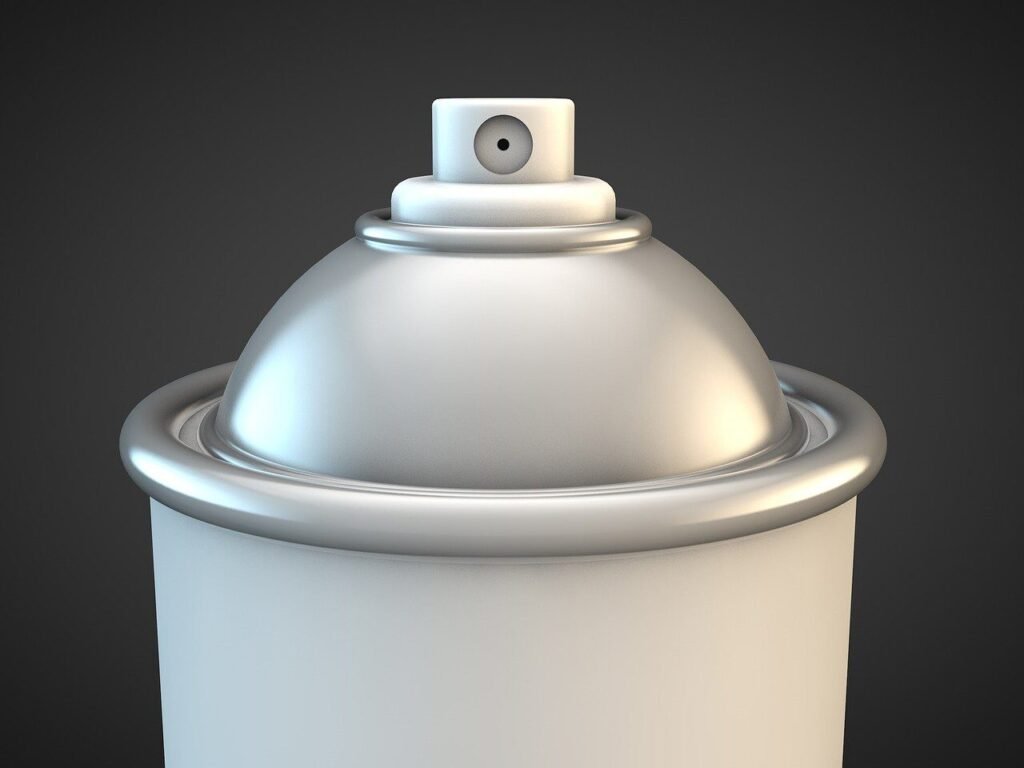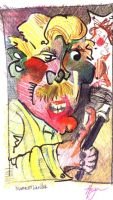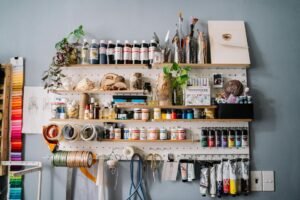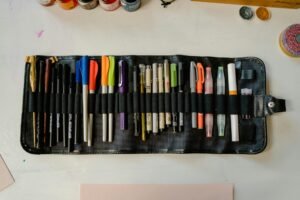Sketchbooks are sacred spaces for artists—repositories of raw ideas, emotional expression, and technical exploration. Whether you’re working in graphite, charcoal, ink, watercolor, pastel, or mixed media, preserving your pages is essential. This guide dives deep into how to protect your sketchbook pages using fixatives for paper and multimedia, helping you maintain the integrity of your work while enhancing its longevity.
From smudge prevention to archival protection, fixatives play a critical role in keeping your sketches safe from wear, moisture, and time. Whether you’re a traditional illustrator, a multimedia experimenter, or a visual journaler, understanding how and when to use fixatives will elevate your creative process and safeguard your artistic legacy.
Why Fixatives Matter in Sketchbook Preservation
The Role of Fixatives in Artistic Workflow
Fixatives are chemical sprays designed to preserve artwork on paper, preventing smudging, fading, and environmental damage. They act as a protective barrier between your medium and the outside world, sealing in pigment while maintaining surface texture. For sketchbook users, fixatives are especially important because pages are often handled, flipped, and stored in compact formats that increase the risk of abrasion.
Common Threats to Unprotected Pages
- Smudging from graphite, charcoal, or pastel
- Bleeding or reactivation of water-based media
- Transfer between facing pages
- Fading due to UV exposure
- Warping from humidity or moisture
Using the right fixative can mitigate these risks, allowing your sketchbook to remain vibrant and intact over time.
Types of Fixatives for Sketchbook Use
Workable Fixatives vs Final Fixatives
Workable fixatives are designed to be applied during the creative process. They allow you to layer additional media on top without disturbing the underlying work. These are ideal for mixed media artists who build up sketches in stages.
Final fixatives, on the other hand, are intended as a last step. They seal the artwork permanently, offering stronger protection against smudging, fading, and environmental wear. These are best used when a page is complete and no further edits are planned.
Matte vs Gloss Finish
- Matte fixatives preserve the natural look of your sketch, reducing glare and maintaining texture.
- Gloss fixatives enhance color vibrancy and add a reflective sheen, often used for ink or saturated media.
Choose based on your aesthetic preference and the type of media used.
Sketchbooks.org | VISUAL RESEARCH HUB
Fixatives For Drawing on Paper
Visual research is critical for any creative endeavor. We have compiled specialized links to lead you directly to images, videos, and inspiration for "Fixatives For Drawing on Paper" across the web's best visual search platforms.
Best Practices for Applying Fixatives
Preparation and Safety
- Always work in a well-ventilated area or outdoors.
- Use a mask to avoid inhaling fumes.
- Protect surrounding surfaces with newspaper or a drop cloth.
Application Tips
- Hold the can 10–12 inches from the page.
- Spray in even, sweeping motions across the surface.
- Apply multiple light coats rather than one heavy coat.
- Allow each layer to dry completely before handling or closing the sketchbook.
Page Protection Strategies
- Insert interleaving sheets (e.g., glassine or tracing paper) between pages.
- Use binding clips to keep pages flat during spraying.
- Avoid spraying near binding glue or delicate paper edges.
Fixatives for Specific Media Types
Graphite and Charcoal
These dry media are highly prone to smudging. Use a workable matte fixative during sketching and a final fixative once complete. Avoid heavy coats, which can darken the drawing.
Pastel and Chalk
These powdery materials benefit from multiple light layers of fixative. A spray with tooth helps bind particles without flattening texture.
Ink and Watercolor
Water-based media can reactivate with moisture. Use a light gloss fixative or UV-resistant spray to preserve vibrancy. Avoid over-spraying, which may cause bleeding.
Mixed Media and Collage
For layered work, choose a workable fixative that allows continued editing. If using textured gels or adhesives, test compatibility first to avoid chemical reactions.
Choosing the Right Fixative for Your Sketchbook
Considerations for Sketchbook Artists
- Paper Type: Heavier papers (200gsm+) handle fixatives better.
- Binding Style: Spiral-bound books allow easier access for spraying.
- Media Variety: Choose a fixative that supports all materials used.
- Archival Quality: Look for acid-free, non-yellowing, and UV-resistant formulas.
Recommended Fixative Features
- Low odor
- Quick drying
- Non-yellowing
- Smudge-resistant
- Compatible with multiple media
Always test on a spare page before committing to a full sketch.

Sketchbooks.org | TRADITIONAL TECHNIQUES
Time for Power Observation with Sketch Making
Unlocking Your Sketchbook Mind In a fast-paced world where moments are fleeting, observation is the unsung hero of creativity. For artists, especially those working with sketchbooks, dedicating time to observe can be transformative. By sharpening...
Frequently Asked Questions
What is the difference between workable and final fixatives?
Workable fixatives allow continued editing; final fixatives seal the artwork permanently.
Can I use fixative on watercolor?
Yes, but use a light spray and test first—some fixatives may cause bleeding or dull colors.
How far should I hold the fixative can from the paper?
Hold it 10–12 inches away and spray in even, sweeping motions.
Will fixative change the look of my sketch?
Matte fixatives preserve texture; gloss fixatives may enhance color but add shine.
Can I use fixative on mixed media pages?
Yes, but test for compatibility—some adhesives or gels may react with spray chemicals.
How do I prevent pages from sticking together?
Use interleaving sheets like glassine or tracing paper between pages after spraying.
Is fixative safe to use indoors?
Only in well-ventilated areas; wear a mask and avoid enclosed spaces.
Does fixative protect against UV damage?
Many final fixatives offer UV resistance—check the label for archival features.
Can I use hairspray as a fixative?
It’s not recommended—hairspray is not archival and may yellow or damage artwork over time.
How long should I wait before closing my sketchbook?
Allow fixative to dry completely—usually 15–30 minutes depending on humidity and coat thickness.
Final Thoughts
Protecting your sketchbook pages with fixatives for paper and multimedia is a simple yet powerful way to preserve your creative work. Whether you’re layering graphite, blending watercolor, or collaging mixed media, the right fixative ensures your sketches remain vibrant, smudge-free, and archival. By understanding the types of fixatives available and how to apply them properly, you can safeguard your artistic journey—page by page, layer by layer.
Let your sketchbook be a lasting record of your growth, experimentation, and expression. With the right protection, every mark you make becomes part of your legacy.
Ready to Share Your Work?








Spray 1st with any multimedia! I lost so much work using a brush and having runs or marker move around.. SPRAY
UV Spray is brilliant
Don’t use hairspray on you art, use it on your hair.